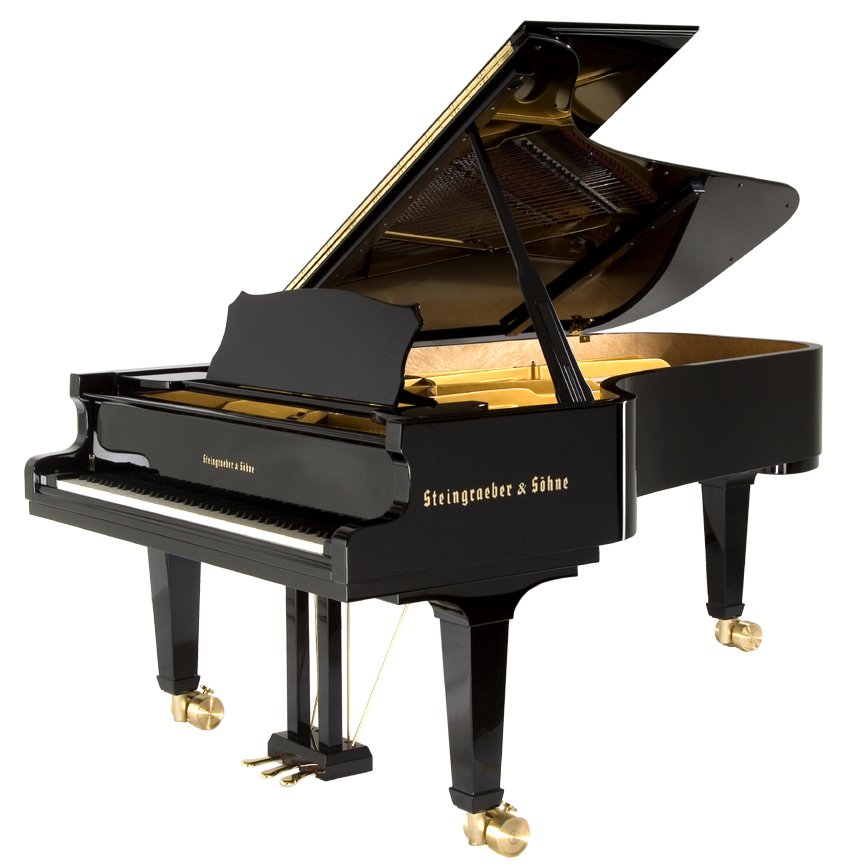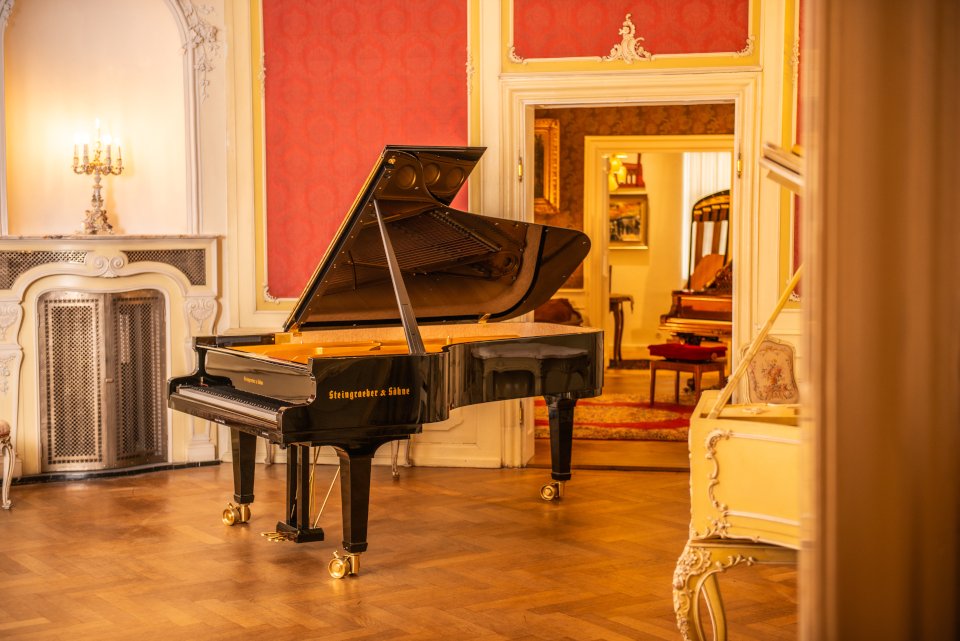Steingraeber Semi-Konzertflügel D-232
A family resemblance is immediately apparent between the D-232 and the Concert Grand Piano E in that of the shape of the outer casing: the piano’s sound reflection zones, symmetrical shape, tone modulation and tightly-controlled soundboard area – with a wide dynamic range from the softest pianissimo to the most energetic fortissimo – create an especially cantabile tone. The capo d’astro bar extends across forty-six notes to just above the middle of the keyboard, so that only forty-two strings are bound by agraffes. This concept results in even more brilliance and resonance, and makes it the only model of its kind in the world.
A family resemblance is immediately apparent between the D-232 and the Concert Grand Piano E in that of the shape of the outer casing: the piano’s sound reflection zones, symmetrical shape, tone modulation and tightly-controlled soundboard area – with a wide dynamic range from the softest pianissimo to the most energetic fortissimo – create an especially cantabile tone. The capo d’astro bar extends across forty-six notes to just above the middle of the keyboard, so that only forty-two strings are bound by agraffes. This concept results in even more brilliance and resonance, and makes it the only model of its kind in the world.
A family resemblance is immediately apparent between the D-232 and the Concert Grand Piano E in that of the shape of the outer casing: the piano’s sound reflection zones, symmetrical shape, tone modulation and tightly-controlled soundboard area – with a wide dynamic range from the softest pianissimo to the most energetic fortissimo – create an especially cantabile tone. The capo d’astro bar extends across forty-six notes to just above the middle of the keyboard, so that only forty-two strings are bound by agraffes. This concept results in even more brilliance and resonance, and makes it the only model of its kind in the world.
This piano is a solo and chamber music instrument best suited to medium-sized auditoriums. At present, the most famous location for a D-232 is at the Bagsværd Kirke in Copenhagen, a monument to twentieth-century architectural history. Jørn Utzon, architect of the Sydney Opera House, conceived the design for this custom-made Steingraeber D-232, and his son Jan undertook the completion of the project at the Steingraeber workshops. Other important sites include universities of music and music academies from Brno to Dresden, Frankfurt, Karlsruhe, Munich, Vienna, and Stockholm.
Special Features
Sound-reflecting casing wall, straight form in the rear
Particularly sonorous discant resulting from:
Precise high-frequency dimension of the treble-range soundboard
Treble backstrings constructed using ‘Mischklang’ (unified sound) principle
Sound bridges on the capo d’astro barsh
Induction-hardened capo d’astro bars
2 frame flanges in the treble region for extra tension
Hardened bridge pins in nickeled iron
Agrafes hardened by steel pins
Perfect touch
5-section weighting of the keyboard: 52–48g (sharp notes 1g lighter)
Fast responding keys (20 % more upweight)
Reliable key tops without aquaplaning
Frame design without hindering cross braces for techniques for Contemporary music
Responding touch by aluminium action rails with wooden fillings
James Bacon: composer, pianist
More information on Steingraeber’s website
References
Baku (Azerbaijan) Gabala Festival
Bangkok (Thailand) Silpakorn University
Brno (CZ) Janácezk-Akademie
Dresden Hochschule für Musik
Duisburg Konzertsaal der Folkwang Universität der Künste
Karlsruhe Hochschule für Musik, Kopenhagen (DK) Bagsvaerd Kirke
Łódź Academy (Poland)
Novosibirsk (RUS) Musical College
München Hochschule Musik
Oslo (NOR) Bymisjon Tøyen kirke
Regensburg/Lappersdorf Konzertsaal Aurelium
Stockholm (SW) Royal Swedish Academy
Trossingen Hochschule für Musik
Wien (AUT) Musikuniversitätrbaijan) Gabala Festival























